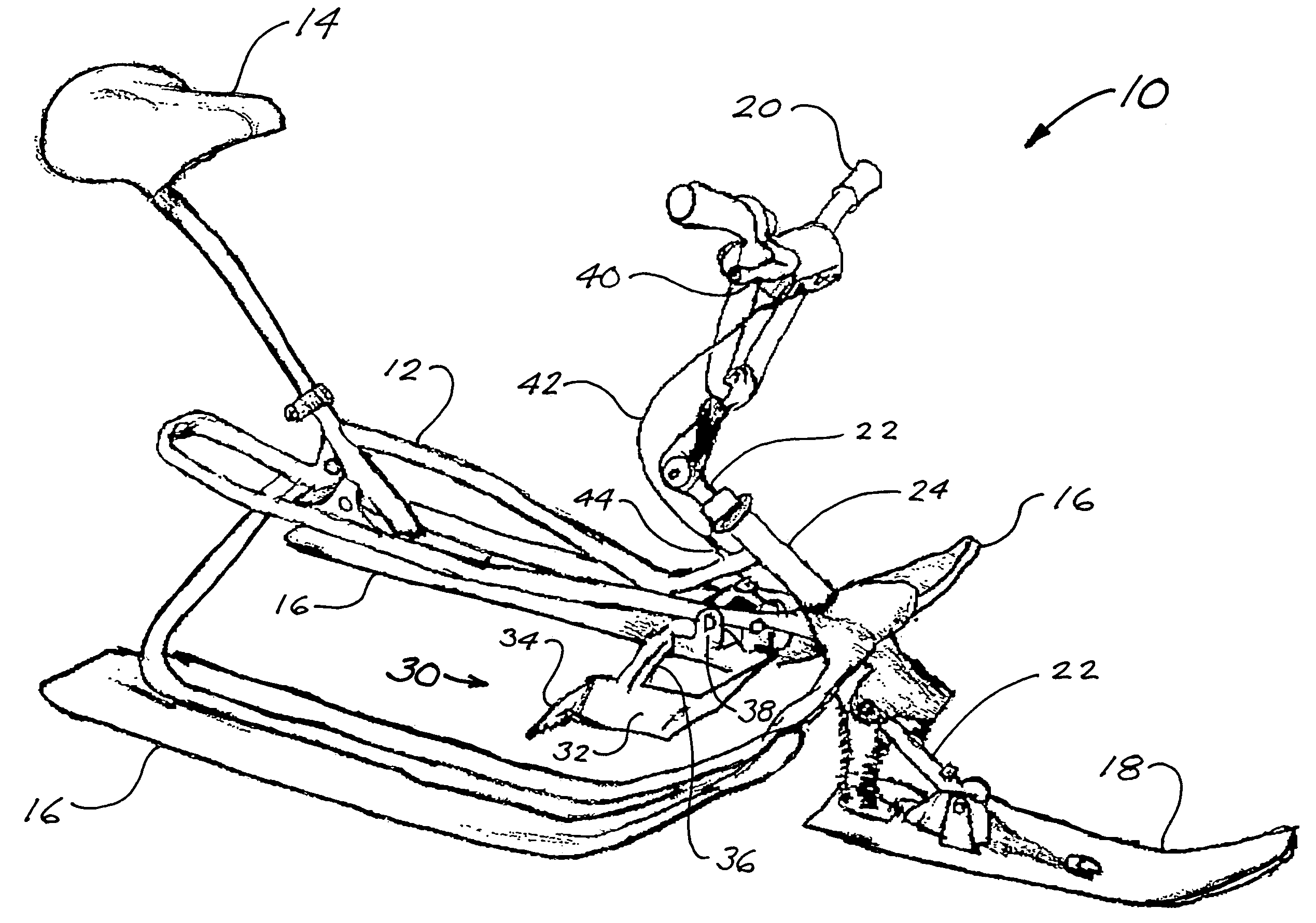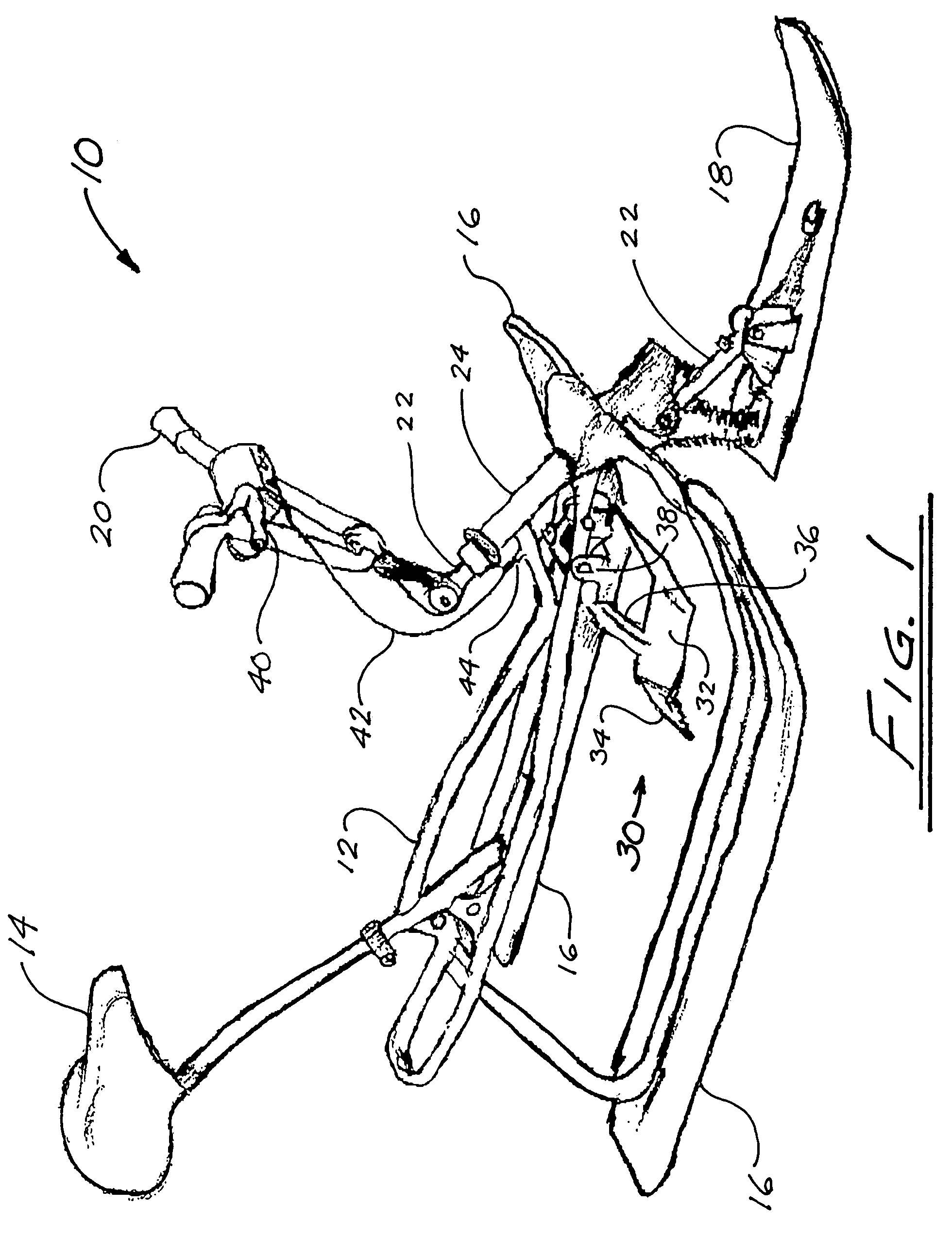Snow sled with dual-mode braking system
a braking system and snow sled technology, applied in the field of snow sleds, can solve the problems of difficult or impossible to apply braking force to one pedal, difficulty in controlling the sled, and difficulty in small increments of braking force, so as to promote directional stability
- Summary
- Abstract
- Description
- Claims
- Application Information
AI Technical Summary
Benefits of technology
Problems solved by technology
Method used
Image
Examples
Embodiment Construction
[0040]Referring to FIG. 1, the snow sled accordingly to the preferred embodiment of the invention, generally denoted by reference numeral 10, has a frame 12 with a rider's seat 14. In the Figures, frame 12 is shown constructed of welded tubular members; this form construction is desirable to minimize sled weight, but is not essential to the invention. The frame configuration shown in the Figures is exemplary and non-limiting; other frame geometries and construction arrangements may be used without departing from the scope of the invention. Frame 12 may be fabricated using any suitable materials, which may include steel, aluminum, or titanium.
[0041]In the illustrated preferred embodiment, the sled 10 has a pair of spaced rear skis 16 suitably fastened to frame 12. The sled 10 also includes a set of handlebars 20 connected to a steering shaft 22 swivellingly disposed within a steering sleeve 24 forming part of frame 12, with the steering shaft 22 being connected at its lower end to a ...
PUM
 Login to View More
Login to View More Abstract
Description
Claims
Application Information
 Login to View More
Login to View More - R&D
- Intellectual Property
- Life Sciences
- Materials
- Tech Scout
- Unparalleled Data Quality
- Higher Quality Content
- 60% Fewer Hallucinations
Browse by: Latest US Patents, China's latest patents, Technical Efficacy Thesaurus, Application Domain, Technology Topic, Popular Technical Reports.
© 2025 PatSnap. All rights reserved.Legal|Privacy policy|Modern Slavery Act Transparency Statement|Sitemap|About US| Contact US: help@patsnap.com



